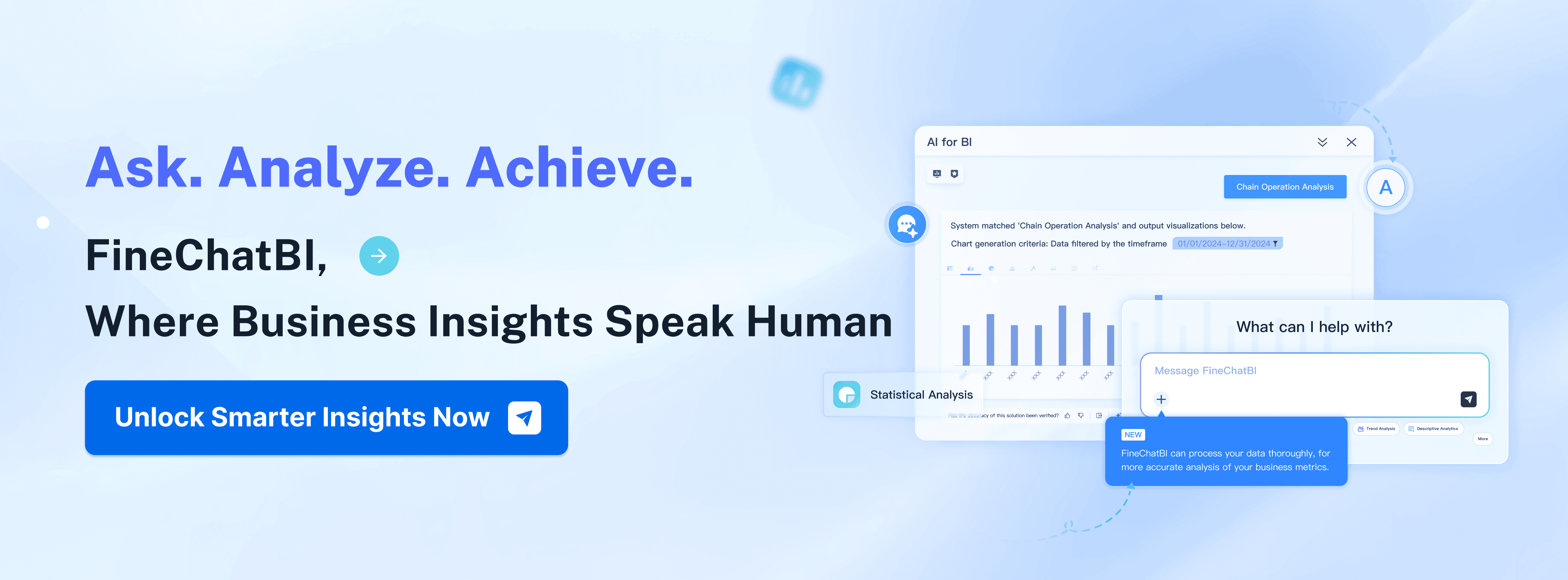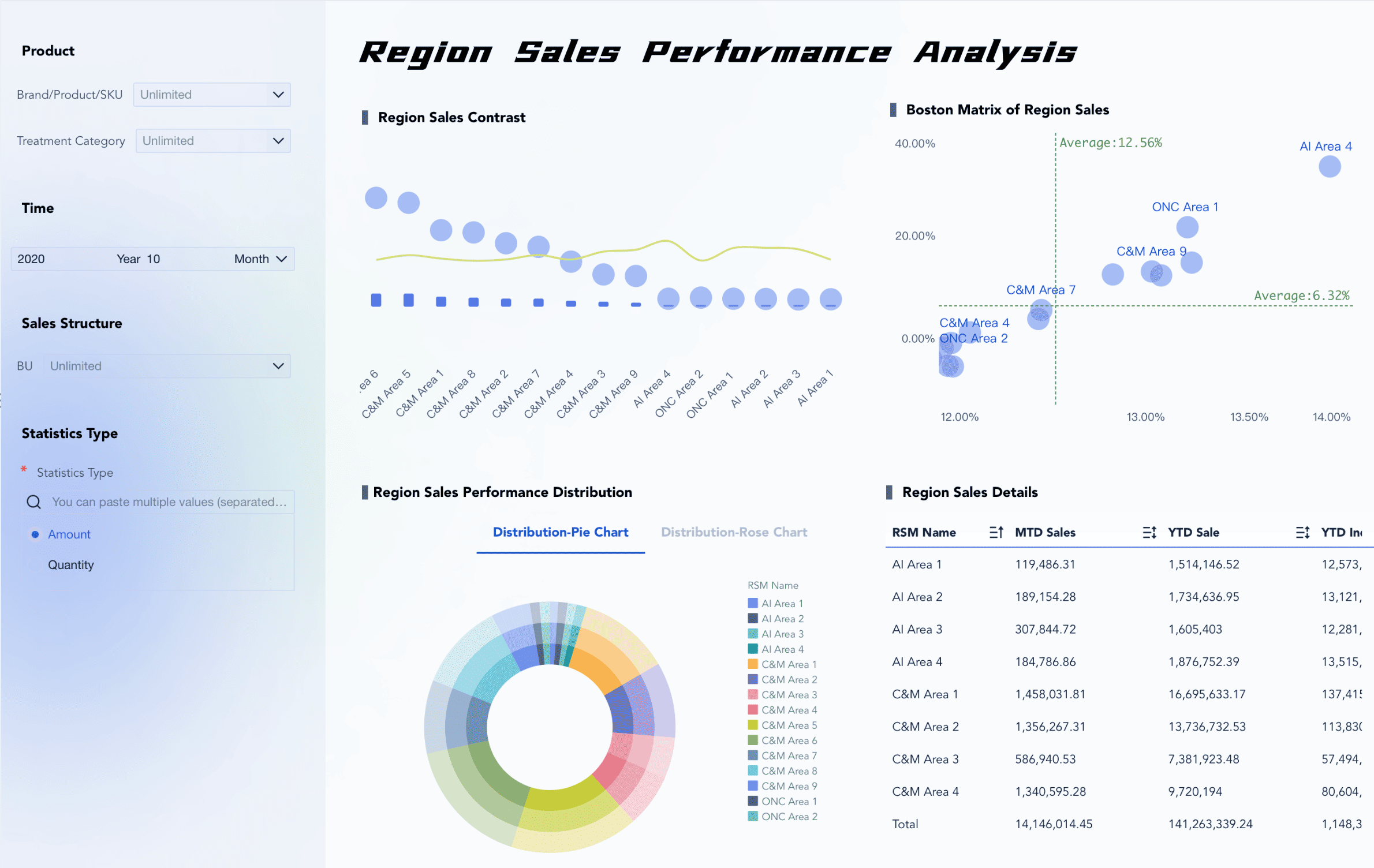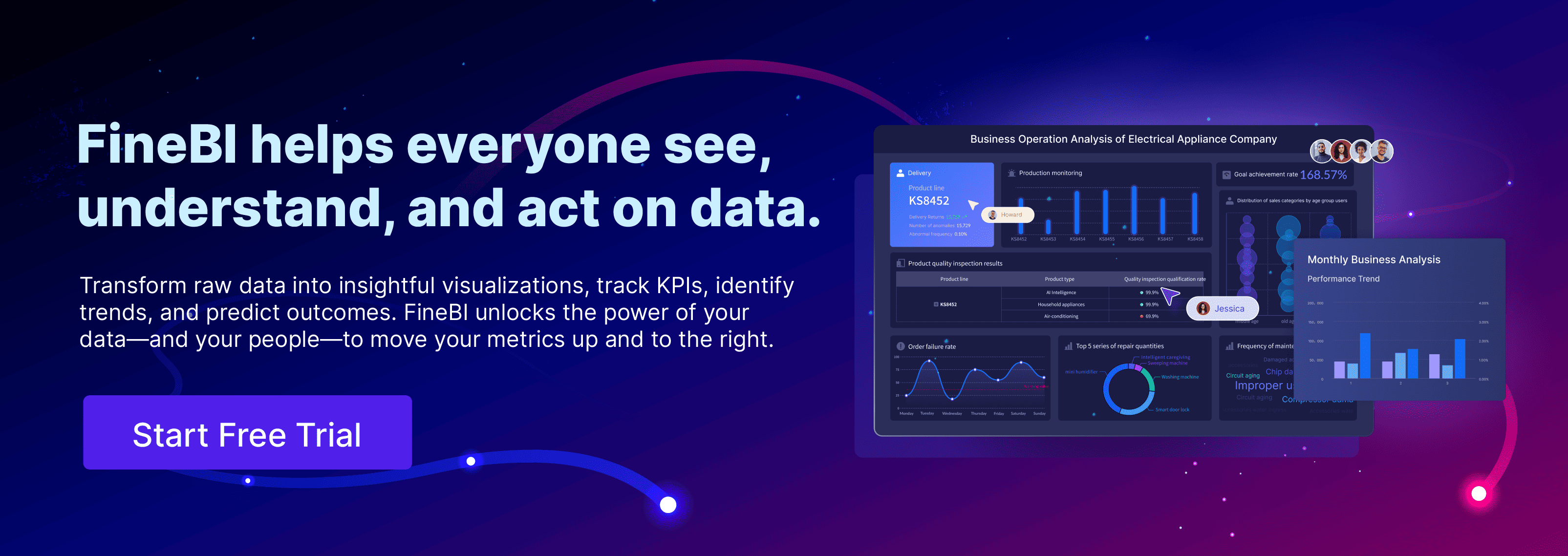

Conceptual Model
Sean, Industry Editor
Oct 13, 2025
A conceptual model gives you a simple way to make sense of something complicated. Imagine you want to plan a trip. You might draw a map to see the best route. This map is your model. In business, conceptual models help you break down big problems and see how parts connect. These models let you picture ideas, test what might happen, and work better with others.
- Conceptual models make tough systems easier to understand.
- You can use models to see how things work together.
- Models help you guess what could happen next.
- These models support teamwork by giving everyone a common view.
Tools like FineBI use conceptual models to help you solve problems and make smart choices every day.
What Is a Conceptual Model?

Simple Definition
A conceptual model helps you picture how something works in your mind. It lets you organize ideas and see how parts connect. When you make a conceptual model, you draw a map of how things relate. This map shows what matters and how things fit together. You do not need numbers or to build anything real. You can use words, diagrams, or simple drawings to share your ideas.
People use conceptual models every day. For example, when you think about how a plant grows, you picture water, sunlight, and soil working together. That picture is a conceptual model in your mind. In business, you might use a conceptual model to show how customers, products, and sales teams work together. These models help you and your team see the big picture and make better choices.
Conceptual models are not the same as other models. Here is a table that shows the differences:
| Type of Model | Description |
|---|---|
| Conceptual Model | A collection of hypothesized relationships between different objects or variables, usually described in narrative form. |
| Physical Model | A tangible representation of systems, often used for direct investigation of large or complex objects. |
| Mathematical Model | An abstract representation that utilizes mathematical relationships to describe phenomena. |
You use conceptual models to understand cause and effect. For example, if you jump down steps, you know you will land at the bottom. That idea is a conceptual model in your mind. Kids use models like this to learn about the world. Physical models, like a Lego spaceship, let you see and touch ideas. But conceptual models are in your thoughts or on paper.
Key Features
Conceptual models have special features that help everyone use them. When you make a conceptual model, you focus on these main parts:
- Conceptualization: You turn real ideas into simple pictures or words.
- Completeness: You add all the important parts so nothing is missing.
- Formalization: You use clear steps to show how things connect.
- Intelligibleness: You make the model easy for others to understand.
- Correspondence: You make sure the model matches real life.
- Invariance: You keep the main ideas the same, even if details change.
- Decomposition: You break big problems into smaller, easier pieces.
These features make your conceptual models strong and useful. When you use these steps, your models help you solve problems, share ideas, and make choices. Good conceptual models make hard things simple and clear, so people have a better experience.
You also use conceptual models to build mental models. Mental models are pictures in your head that help you understand how things work. When you use conceptual modeling, you connect your thoughts to the real world. This helps you and your team work together and reach your goals.
Tip: When you make conceptual models, always check if your model is easy to understand and matches real life. This will help you make better models every time.
Why Conceptual Models Matter
Clarifying Complexity
Every day, you deal with hard systems at work and in life. A conceptual model helps you break these systems into smaller parts. You can focus on the main ideas and skip confusing details. This makes it easier to see how things connect.
- A conceptual model changes how you look at a system. It shows the important parts and hides what does not matter.
- These models use what you already know. You do not need to learn lots of new things.
- They give you a clear view, so you do not get lost in hard systems.
For example, FineBI works with data from many places. The conceptual model in FineBI puts this data in order. You can spot patterns and see how things relate. You do not need to know every tech detail. You get a simple view that helps you understand your data. This makes your experience better and helps you find answers fast.
Sales performance dashboard created by FineBI (click to engage)
FanRuan uses conceptual models to help companies handle tricky data. A big U.S. company made data safer and easier to see with a data governance platform. This platform used a clear conceptual model to find and sort sensitive data. You can see how a good model helps a lot.
Communication Benefits
When you work with others, you need to understand each other. Conceptual models give you a way to share ideas. You can use pictures, words, or charts to show what you mean. This makes it easier for everyone to talk together.
- Conceptual models help teams from different jobs work as one. Researchers, engineers, and business leaders can all use the same model.
- Making a model together helps you set clear limits. You can see what is missing and what needs more facts.
- When you build models as a team, you talk about your ideas and check your thinking.
In big companies, you work with many groups. Conceptual models help you think as “One Company.” You focus on shared goals, not just your own group. You can match your work with others, set the same goals, and check progress together. Tools like FineBI help by letting you share dashboards and reports. Everyone sees the same facts and works for the same results.
You also make mental models when you use conceptual modeling. These mental models help you remember how things work and explain them to others. When you use clear conceptual models, teamwork gets easier and better.
Decision Support
You make choices every day that matter for your work. Conceptual models give you a map to help you decide. They show you your choices, the risks, and what might happen.
| Evidence Description | Key Insight |
|---|---|
| Team members must understand how decisions are made. | Good decisions happen when everyone knows the process. |
| Picking the right model helps you get better results. | The best results come from using a model that fits the problem. |
| Tools turn ideas into things you can use. | Frameworks can be shared, making decisions easier for everyone. |
| Templates help you see your choices and results. | They are a tool for checking different options in decisions. |
| Different models help solve business problems. | Five main models help leaders fix many business issues. |
You can use conceptual models to try ideas before you act. For example, FineBI lets you make dashboards to see what could happen if you change something at work. You can see the results before you make a big choice. This lowers risk and helps you pick the best way.
FanRuan’s tools, like FineBI and FineDataLink, make decisions easier. FineBI lets you look at data without being a tech expert. FineDataLink keeps your data fresh, so your choices use the newest facts. When you use these tools, you turn ideas into real actions.
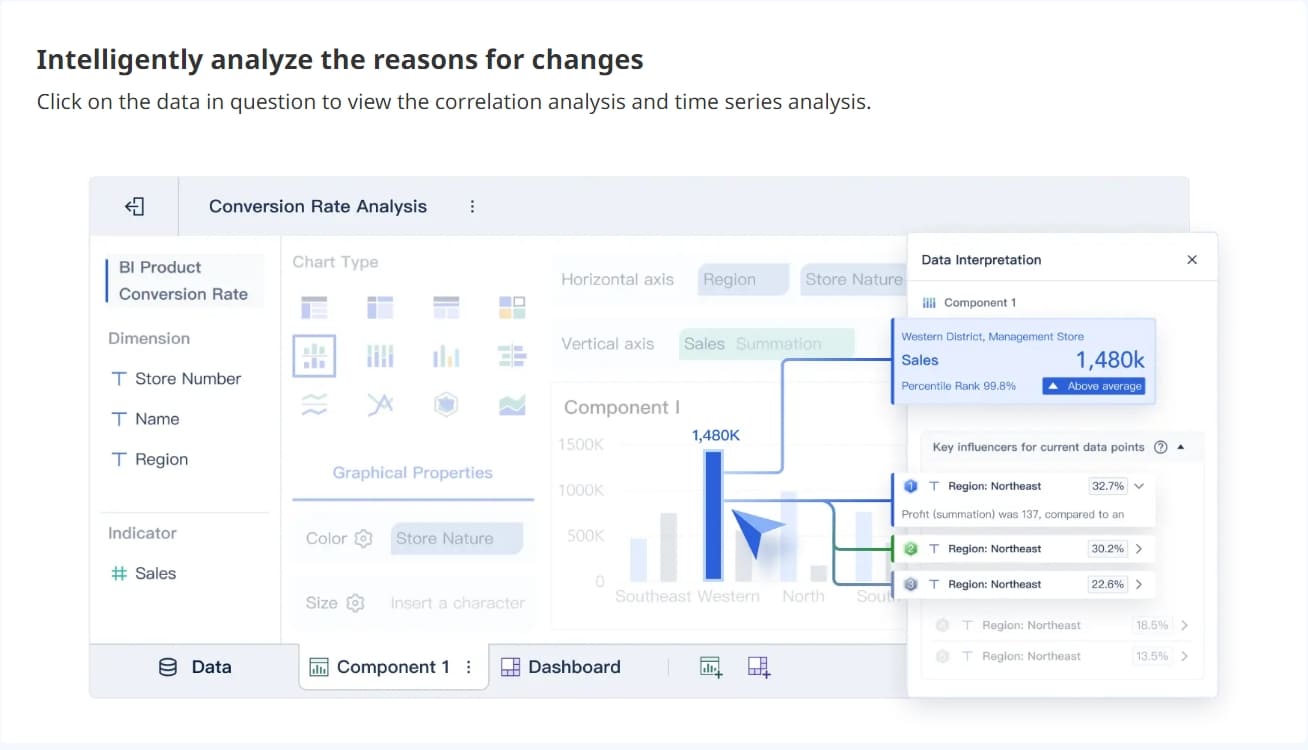
Tip: Use conceptual models to help you make choices. They help you see the big picture, check your options, and pick the best answer for your team.
Conceptual Modeling in Business Intelligence
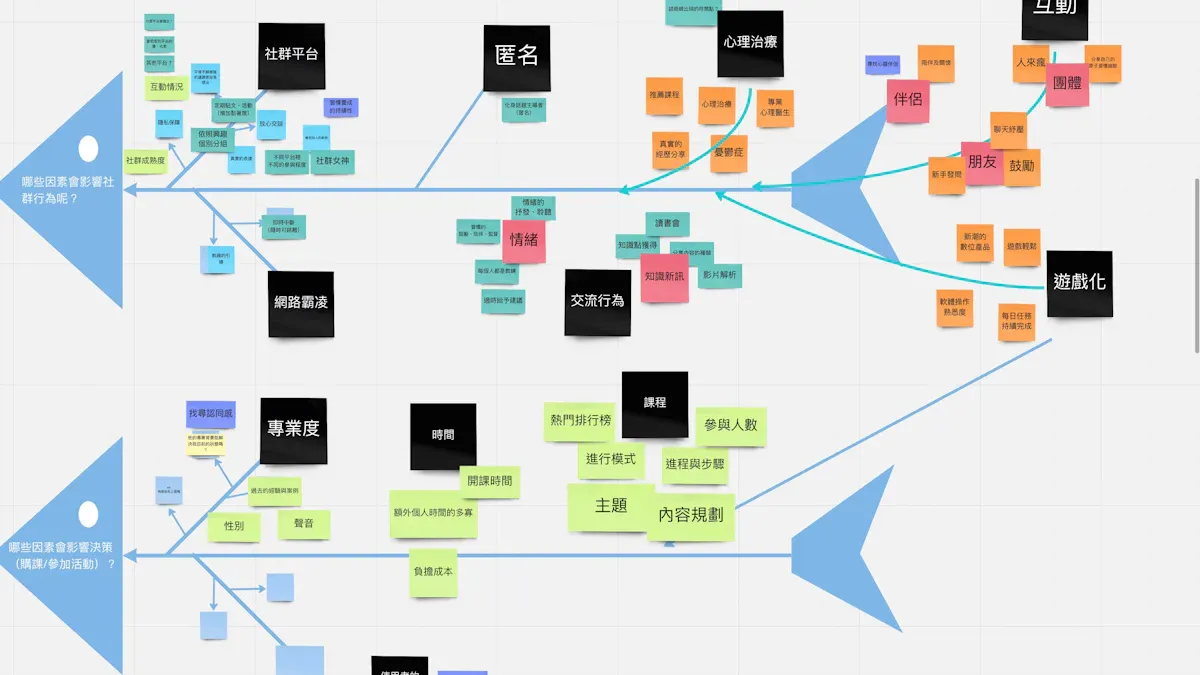
FanRuan and FineBI Use Cases
Working with business data can be tough. Data is often stored in many places. This makes it hard to see everything at once. Conceptual models help fix this problem. When you use a conceptual model, you make a shared view of your company’s data. This shared view helps everyone know what the data means and how it connects.
FanRuan and FineBI use conceptual models to break down data silos. These models help everyone understand what each part of the data means. You and your team can find hidden problems and work together better. With one model, you get a clear look at all your data.
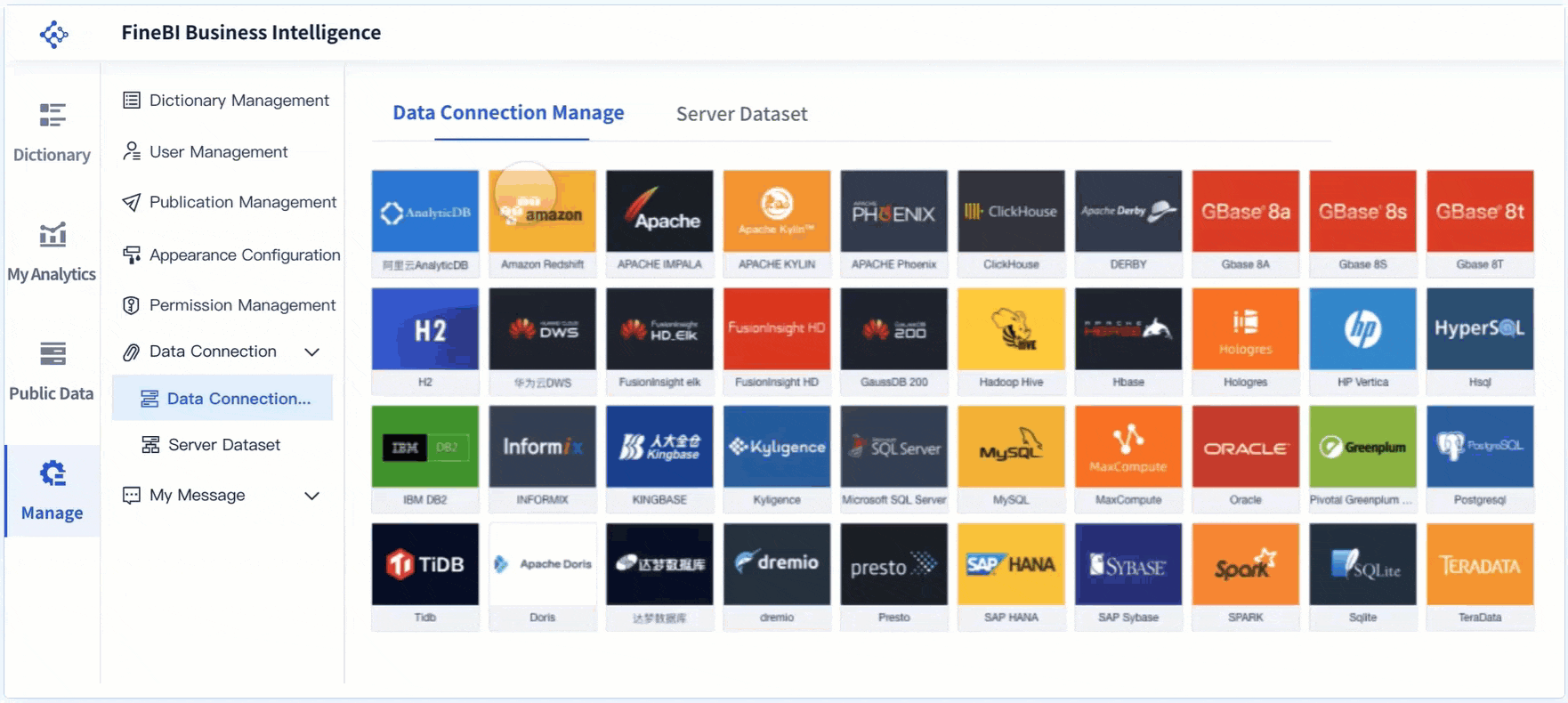
Here are some ways you use conceptual modeling in business intelligence:
| Application of Conceptual Modeling | Description |
|---|---|
| Gather both business and data requirements upfront | You ask everyone for ideas to make models that fit your needs. |
| Use data models as a communication tool | You use models to make hard data easy to talk about and understand. |
FineBI lets you build models that fit your business. You can group users by what data they need and set up permissions. This setup helps people do their own data analysis. You get the right tools and access, so you can look at data yourself.
- Conceptual models help you group users.
- These models help you plan data setup and permissions.
- You can pick the best tools for each group.
Real-World Example
When you use conceptual models in business intelligence, you see real changes. Many big companies have done better by using these models. For example, American Express made security risks 60% lower. Starbucks used models to use resources 40% better. Netflix got 65% more people involved.
| Company | Measurable Outcome |
|---|---|
| American Express | Reduced security vulnerabilities by 60% |
| Starbucks | Improved resource utilization by 40% |
| Netflix | 65% better stakeholder engagement |
| Toyota | Reduced data quality issues by 75% |
| Microsoft | 35% reduction in overall costs |
| Amazon | Enabled regional expansion 70% faster |
| Salesforce | 80% faster team capability building |
| IBM | 75% better team alignment |
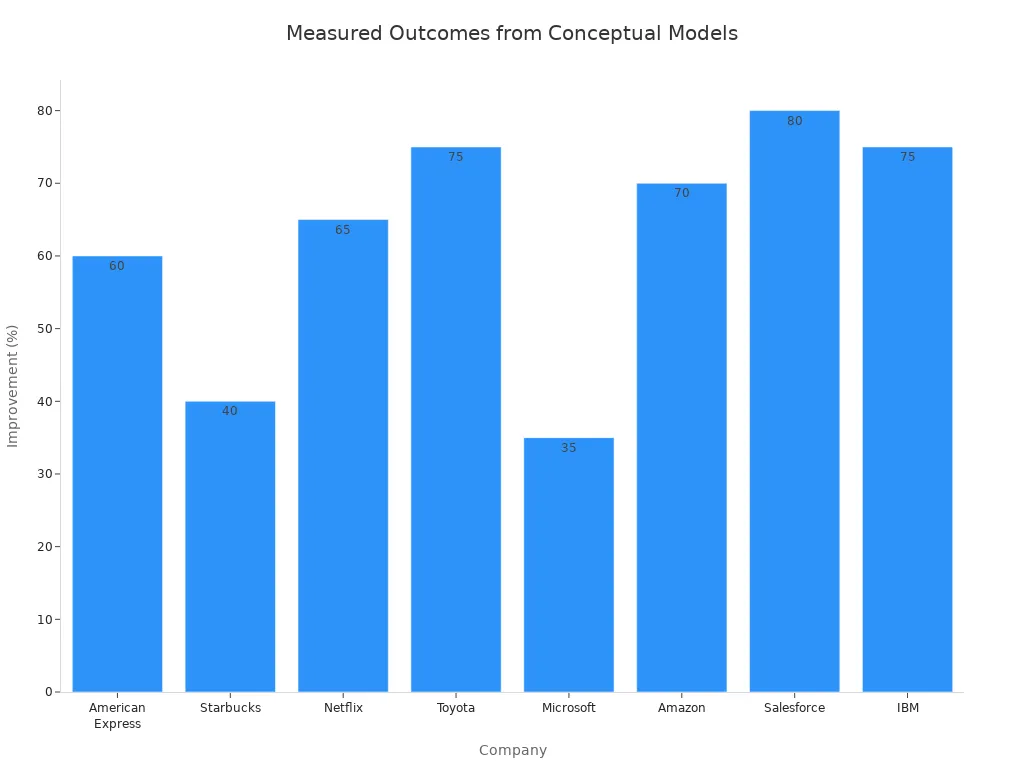
You can also get these benefits in your own work:
- You cut project time by 65%.
- You keep analytics the same everywhere.
- You save money by fixing risks early.
- You finish projects 30% faster than planned.
- You help teams work together 90% better.
When you use conceptual models, you make mental models that help your team think the same way. This shared thinking makes things easier and helps your business grow. FanRuan and FineBI give you tools to build these models, connect your data, and find new answers.
Tip: Begin with a simple model. Add more details as you learn. This way, your models stay clear and helpful.
How to Create a Conceptual Model
Basic Steps
You can make strong conceptual models by following some easy steps. These steps help you put your ideas in order. They also make sure your models work well for business intelligence and data integration.
- Collect and Organize Data
First, decide what you want your conceptual model to show. Gather all the information you need. Make sure your data is clean and ready to use. - Build a Conceptual Model
Draw a simple picture of your system. Focus on the main parts and how they connect. In FineBI, you can use visual tools to show these links. - Validate Data
Check your data for mistakes or copies. This step keeps your models correct and trustworthy. - Define Attributes and Entities
List the important parts of your system. Describe their features. You do not need every detail, just what matters most.
In business intelligence, you often work with others to build conceptual models. You talk with business teams and IT to make sure your models fit real needs. This teamwork makes your models stronger.
Here is a table that shows how building conceptual models in business intelligence is different from other fields:
| Aspect | Business Intelligence | Other Fields |
|---|---|---|
| Collaboration | Work closely with business teams | Sometimes less teamwork |
| Iterative Process | Update models with feedback | Often a straight path |
| Focus on Business Use Cases | Aim for real business goals | May focus on technical details |
| Clarity in Communication | Use simple language for everyone | May use more complex terms |
| Model Validation | Easy checks with business users | Checks may be more technical |
Best Practices
You can make your conceptual models better by using some smart tips. These tips help you build models that last and work for everyone.
- Know what your business needs. Set clear goals for your conceptual model.
- Always check your data to make sure it is right and complete.
- Keep your model flexible. Make sure it can change as your business changes.
- Use a data dictionary and metadata to track important data points.
- In FineBI, use self-service tools so users can build and test their own models. This helps teams learn faster and makes things easier.
- Share your models with others. Ask for feedback and update your models when needed.
- Practice conceptual modeling with real examples. Training programs like the Google Business Intelligence Professional Certificate teach you about data modeling and building strong models.
Tip: Start with a simple model. Add more details as you learn. This keeps your conceptual models clear and easy to use.
When you follow these steps and best practices, you build conceptual models that help your team see the big picture. You also make mental models that guide your thinking every day. By focusing on the elements of a conceptual model, you make sure your models help with better decisions and teamwork.
You use a conceptual model to help understand hard ideas. These models show how things fit together. They make user experience better and help you make good choices. In business intelligence, models help you go from raw data to answers. The table below lists the main benefits:
| Benefit | Description |
|---|---|
| Clear Data Representation | Makes data easier to understand for all teams. |
| Basis for Logical and Physical Models | Gives a base for more data modeling and helps move from needs to design. |
| Ensuring Consistency and Accuracy | Uses set meanings to keep data right and stop repeats. |
| Flexible and Scalable Framework | Works with many database types and can grow with new data. |
When you use models in FanRuan and FineBI, you help your team work well and grow. Try using conceptual models at your job. Clear models and thinking help you fix problems and reach your goals.
FanRuan
https://www.fanruan.com/en/blogFanRuan provides powerful BI solutions across industries with FineReport for flexible reporting, FineBI for self-service analysis, and FineDataLink for data integration. Our all-in-one platform empowers organizations to transform raw data into actionable insights that drive business growth.
FAQ
A conceptual model shows how things connect. You use it to understand big ideas. It helps you see the main parts and how they work together. You do not need numbers or code.
FineBI lets you build models to organize your data. You can see how different pieces of information relate. This helps you find answers and make better choices. You do not need to be a tech expert.
Conceptual models help you solve problems faster. You can share ideas with your team. Everyone sees the same picture. This makes teamwork easier and helps you reach your goals.
Yes! You can update your model as you learn more. Add new parts or fix mistakes. A good model grows with your needs.
FanRuan’s tools, like FineBI and FineDataLink, give you easy ways to connect, clean, and explore data. You can build models without coding. These tools help you turn ideas into real results.


